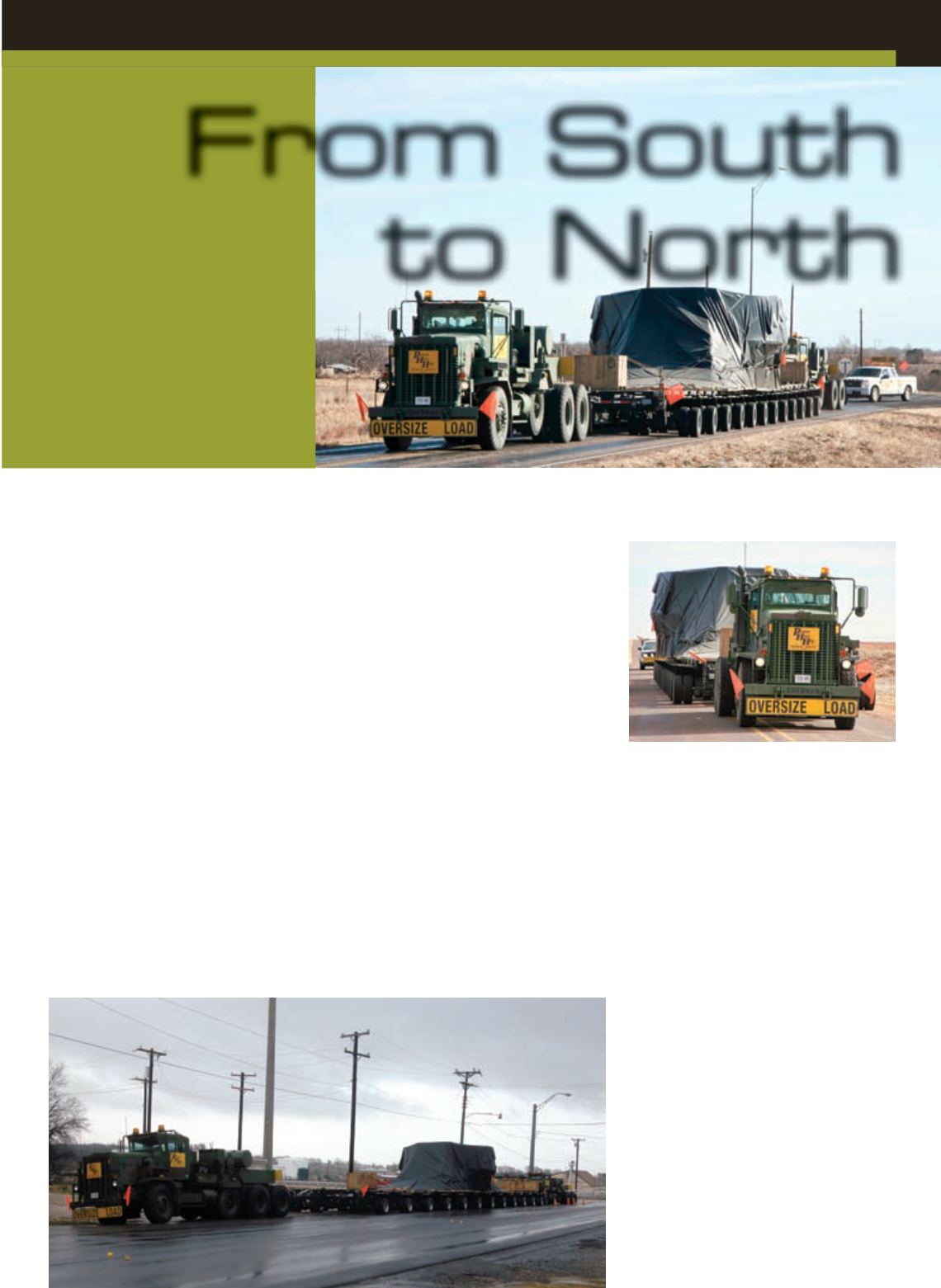
45
TRANSPORT
SITE REPORT
“Some of the moves had to be completed
entirely at night,” Jones says. “We also had
to have police escorts in certain areas.”
Houston County and Hico, TX both
required night moves. And if two night
moves through cities weren’t challenging
enough, the entire state of Nebraska
and entire province of British Columbia
required night transportation only.
Police escorts were involved in Houston
and Houston County, the full state of
Nebraska and British Columbia, Canada.
“We had absolutely no accidents or
incidents,” Jones says. The turbine runner
made it safe and sound to its destination
of Valemount, BC, Canada, a village of
just over 1,000 people. Valemount is
situated between the Rocky, Monashee and
Cariboo Mountains.
“We had a tremendous crew who did
fantastic planning work,” Jones says. “It
took them seven months to plan and our
client ended up 100 percent satisfied.”
■
L
ike most complicated moves,
the planning phase typically
takes more time than the actual
transport itself. So was the case for
Ontario, Canada-based Pioneer Heavy
Haul Inc. who was approached two years
ago by a client to assist in the transport
of a turbine runner from Houston to
Valemount, British Columbia, Canada.
“We started to act on the plan in May of
2012,” says Mel Jones, president of Pioneer
Heavy Haul Inc. “It took from then until
December 2012 to get everybody to agree
to one transport configuration.”
Jones had been called upon to move a
21-foot, 5-inch diameter, 10-foot, 1-inch-
tall turbine runner. The 303,000-pound
piece is one part of a hydro-electric power
generation station in British Columbia.
While the trip technically started in
Houston for Pioneer Heavy Haul, the
piece was actually manufactured in
Germany and transported via ship to
Texas. Once the ship docked in Houston,
the turbine runner was picked and placed
by cranes onto a Goldhofer THP/CA12-
axle dual lane trailer pulled and pushed
JULY 2013
ACT
Pioneer Heavy Haul Inc.
recently put its Goldhofer
dual lane THP/CA12 to
work when it transported
a turbine runner
3,300 miles.
Lindsey
Anderson
reports.
From South
to North
by two 1977 Oshkosh M911 tractors. The
trailer was set up to be 18-feet-wide.
“The tractors are equipped with 450
hp Detroit diesel engines and Allison
automatic transmissions,” Jones says.
“They are equipped with six wheel drive.”
Jones says these configurations used
were necessary to meet the multiple
requirements of the convoy’s seven-state,
two-province journey.
“Because you have nine jurisdictions in
two different countries, the routing was
a challenge,” Jones says. “But a bigger
challenge was trying to get all of those
nine jurisdictions and the city of Houston
to agree to the configuration that would
suit all of their requirements.”
Weather challenges
The move officially started on January 10,
2013. What was supposed to take 31 days
actually ended up reaching 57 days due
to visibility problems, snow and freezing
rain, Jones says.
The total 3,300-mile-long trip had other
challenges beyond the elements and
cooperating government regulations.
Pioneer Heavy Haul transported
a turbine runner more than 3,300 miles
from Houston to British Columbia, Canada.
While the haul was slated to last only 31
days, it actually took 57 because of difficult
weather and environmental conditions.
Some of the moves had to be
completed entirely at night, while
others were police-escorted.


